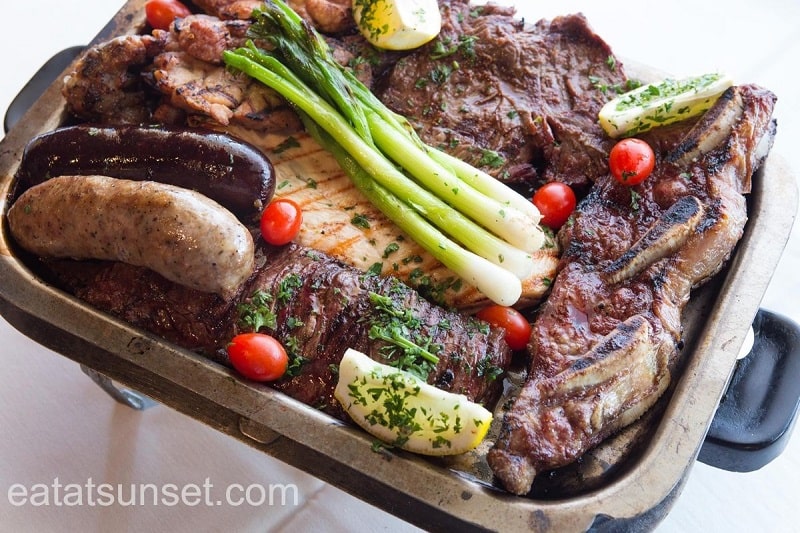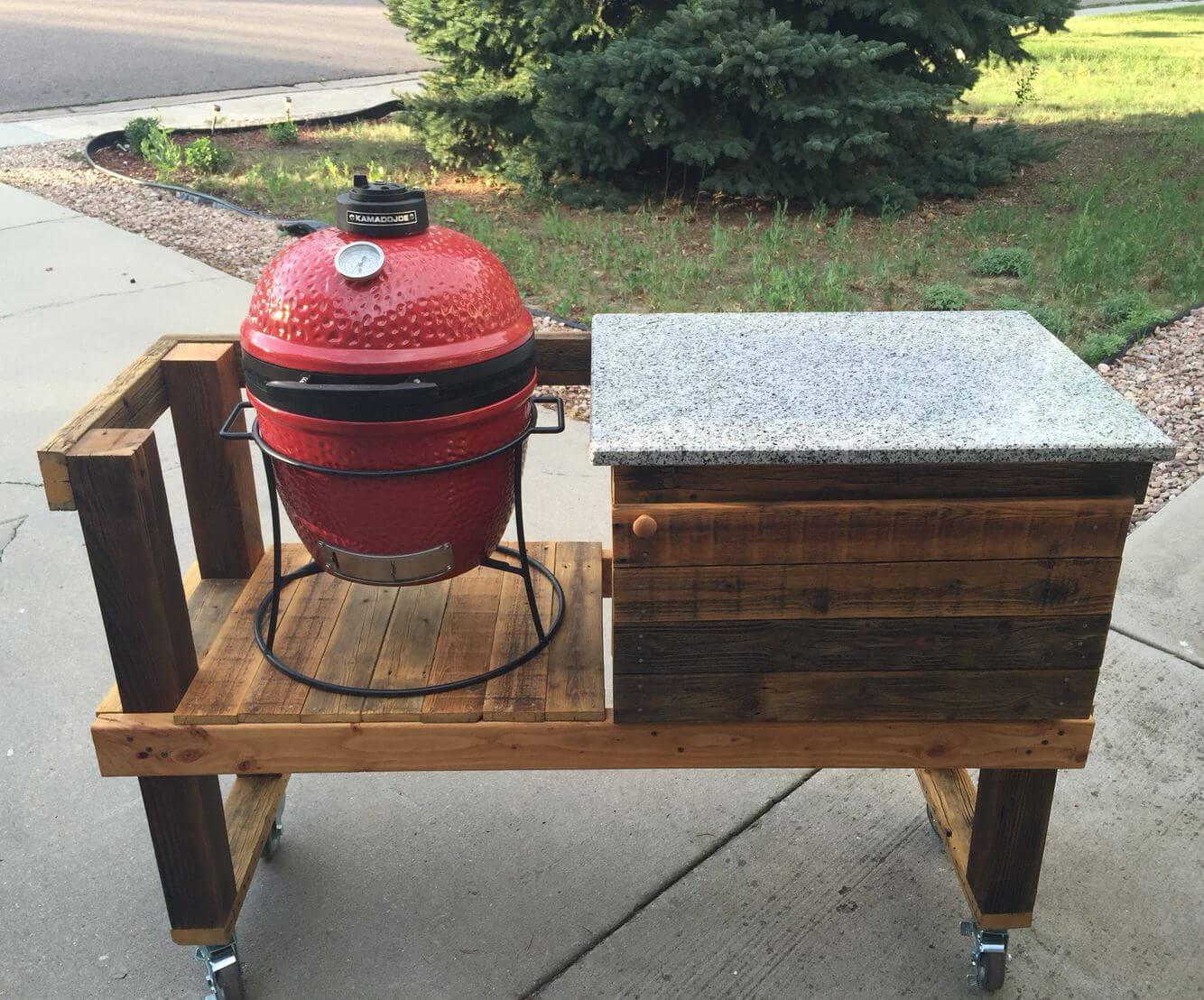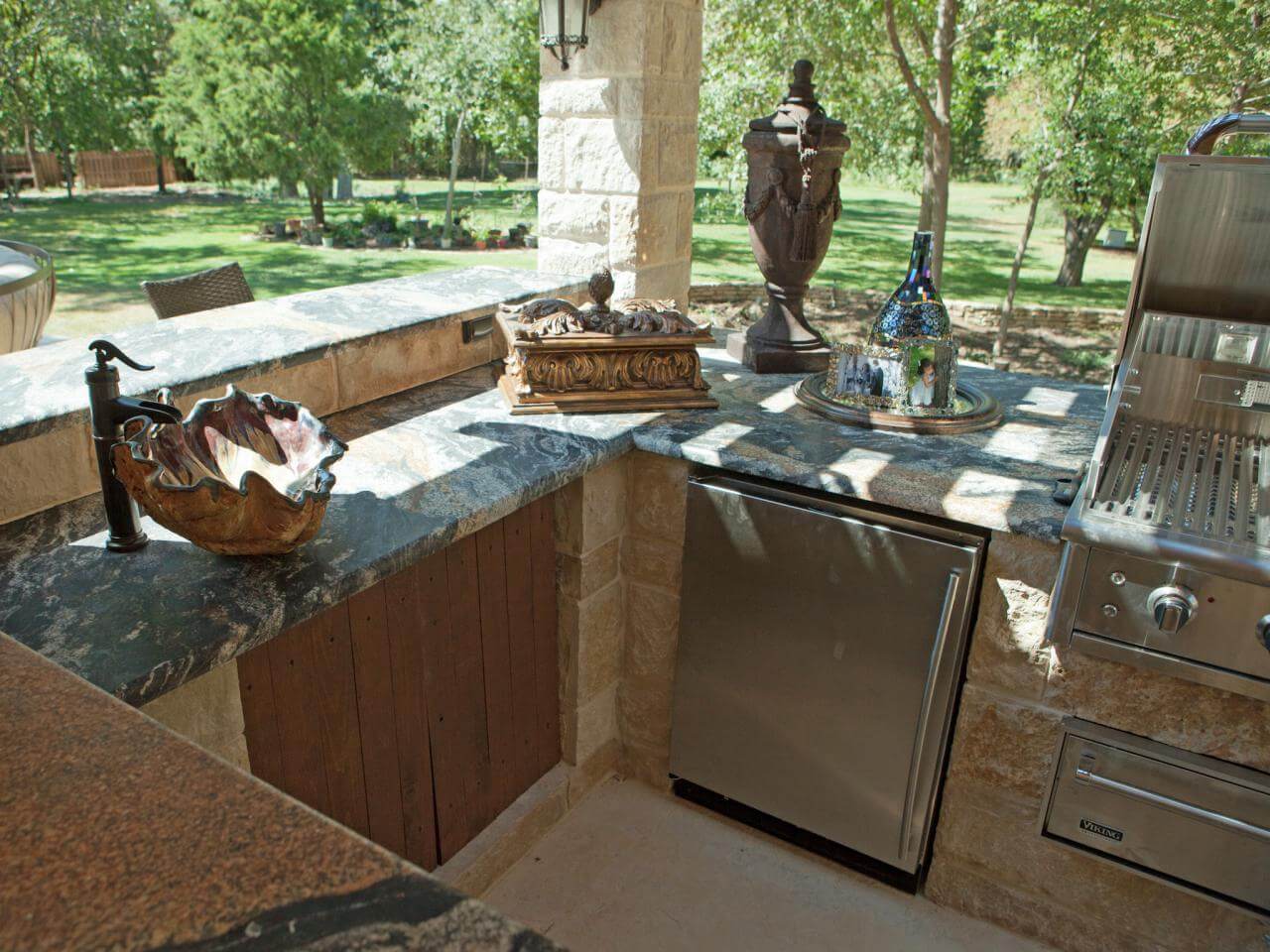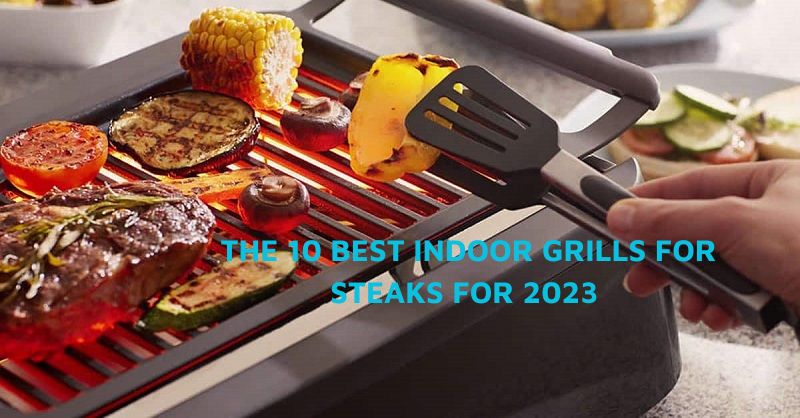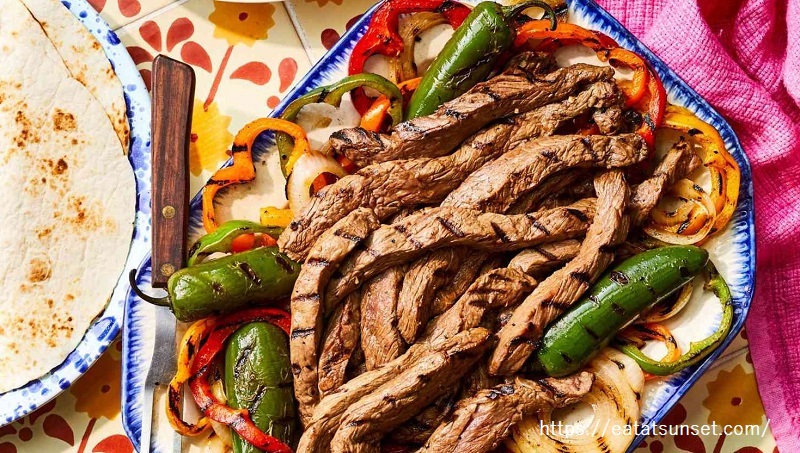
The Secret to Perfectly Cooked Beef Fajitas You Need To Know
Beef fajitas are a Tex-Mex classic that can easily be recreated in your own kitchen. Cooking them to perfection requires the right temperature settings and techniques, ensuring tender, juicy meat, and flavorful vegetables.
In this blog post, Sunset Bar and Grill will explore the ideal oven temperature for cooking beef fajitas at home — including which factors to consider before setting the heat and various methods for savory success.
Key Takeaways
- The ideal temperature for cooking beef fajitas in the oven will depend on factors like the cut of meat and thickness, personal preference in terms of doneness levels, and whether other ingredients are being added to the baking sheet.
- Various techniques can be used to cook beef fajitas in the oven including broiling, roasting, and baking. Each method has its own benefits and unique flavor profile.
- To perfect your beef fajita dish when cooking in the oven, choose high-quality cuts of meat, marinate it for at least 30 minutes, slice it properly against the grain to achieve thin tender pieces, and add vegetables that are thinly sliced or chopped so they roast or broil easily alongside your steak strips while keeping an eye out on your food as it cooks since this method can cause the meat to easily overcook and dry out.
The Ideal Temperature For Cooking Beef Fajitas In The Oven
Before setting the oven temperature, it’s important to consider factors like the cut of beef and thickness.
Factors To Consider Before Setting Temperature
Several factors come into play when determining the ideal temperature for cooking beef fajitas in the oven, and paying attention to these will help you achieve flawless results.
One key consideration is the thickness of your meat slices; thinner cuts will require a shorter cooking time at higher temperatures, while thicker pieces may need a bit longer at a lower heat setting.
Another essential factor is personal preference in terms of doneness levels. Some might prefer their fajitas cooked medium-rare with pink centers and juicy flavors, whereas others may lean towards well-done meat with no hint of pinkness left.
Lastly, take into account whether you are incorporating other ingredients like vegetables on your baking sheet alongside your beef strips. Oven-roasted peppers and onions can add fantastic flavor and texture to your fajita mix but may require different cooking times than your cut of choice.

Ideal Temperature Range For Different Cuts Of Beef
Different cuts of beef require different cooking temperatures in order to achieve the perfect tenderness and flavor for your beef fajitas. Below is an HTML table that shows the ideal temperature ranges for various cuts of beef.
| Cut of Beef | Ideal Temperature Range |
|---|---|
| Skirt Steak | 400-450°F (204-232°C) |
| Flank Steak | 400-450°F (204-232°C) |
| Sirloin Steak | 400-450°F (204-232°C) |
| Strip Steak | 450-500°F (232-260°C) |
| Ribeye Steak | 450-500°F (232-260°C) |
Techniques For Cooking Beef Fajitas In The Oven
There are several techniques you can use to cook beef fajitas in the oven, including broiling, roasting, and baking. Each method has its own benefits and unique flavor profile.
Broiling
Broiling is a cooking method that utilizes high heat from the top of the oven to cook beef fajitas quickly and efficiently. To broil beef fajitas, you should preheat your oven’s broiler setting for about 10 minutes before placing the seasoned steak on a baking sheet or aluminum foil-lined pan coated with cooking spray.
Make sure to position the rack close to the top heating element for even cooking. When broiling, it’s important to keep an eye on your food as it cooks since this method can cause the meat to easily overcook and dry out.
Roasting
Roasting is an excellent cooking technique for beef fajitas in the oven, especially when using thicker cuts of meat. To roast beef fajitas, preheat your oven to the ideal temperature range suggested by the cut of meat you’re cooking.
Next, spread out your marinated steak on top of the vegetables and place it in the oven. Make sure to flip the meat halfway through roasting to ensure that both sides cook evenly.
Roasting can take some time, but you’ll know your beef fajitas are done when they achieve a golden-brown color on both sides and reach an internal temperature within a specific range depending on the type of beef used.
Baking
Baking is another great option for cooking beef fajitas in the oven. To start, preheat your oven to 400°F and line a baking sheet with aluminum foil or coat it with cooking spray.
Next, bake the fajitas in the oven for 15-20 minutes or until the meat is cooked through and the vegetables are tender. However, keep an eye on them as ovens vary in temperature intensity.
Once baked, remove from the oven and let rest for a few minutes before serving with warm tortillas and any additional toppings of choice such as guacamole or shredded cheese.

Tips For Cooking Perfect Beef Fajitas In The Oven
Choose a high-quality cut of meat, marinate it for at least 30 minutes, slice it properly against the grain, add your favorite vegetables, and keep a constant eye on the cooking process.
Choosing The Right Cut Of Meat
When preparing beef fajitas in the oven, selecting the right cut of meat is crucial to achieving the best results. The ideal cuts for fajitas are those with a good balance of tenderness and flavor.
Skirt steak, flank steak, and sirloin are excellent choices as they cook quickly at high temperatures.
It’s important to note that tougher cuts like chuck or round may take longer to cook and require low-heat methods such as slow cooking or braising rather than roasting or broiling in the oven.
When shopping for meat, make sure to ask your butcher for recommendations based on your desired cooking method and budget.
Marinating The Meat
Marinating the meat is a crucial step in achieving tender and flavorful beef fajitas. A good marinade will help to break down the tough fibers of the meat while infusing it with delicious flavors.
Next, place your steak or beef strips in a resealable plastic bag or dish and pour the marinade over them. Make sure that each piece of meat is evenly coated before sealing the bag or covering the dish with plastic wrap.
Let it sit in the fridge for at least 30 minutes to several hours, depending on how thick your cut of beef is.
Slicing The Meat Properly
Slicing the meat properly is crucial to ensure that your beef fajitas turn out tender and flavorful. When buying skirt steak, look for a cut with uniform thickness. Before slicing, remove any excess fat or gristle.
To achieve thin slices, it’s best to cut against the grain of the meat instead of parallel to it.
If you’re not confident in your knife skills, consider investing in a good-quality electric knife or having your local butcher slice the meat for you.
Adding Vegetables
Adding vegetables is an essential part of cooking delicious beef fajitas in the oven. Bell peppers and onions are classic choices, but you can also get creative with other veggies like zucchini or mushrooms.
To prepare the vegetables, toss them in a mixture of olive oil and your favorite fajita seasoning blend before adding them to the baking sheet with the beef. This will ensure that they are seasoned well and complement the flavors of the meat.
Roast or bake until slightly caramelized and tender, around 10-15 minutes depending on their thickness.
Monitoring The Cooking Process
To ensure that your beef fajitas are cooked to perfection in the oven, it’s important to monitor the cooking process closely. Here are some tips:
- Check the oven temperature regularly to make sure it stays within the recommended range.
- Use a meat thermometer to check the internal temperature of the meat as it cooks. For medium-rare steak fajitas, aim for an internal temperature of 135°F (57°C); for medium, aim for 145°F (63°C).
- Flip and stir the meat and vegetables occasionally to ensure even cooking and prevent burning.
- If you notice that the beef or vegetables are starting to brown too much on one side, rotate or move them around on the baking sheet.
- Keep an eye on the cooking time and remove the fajitas from the oven when they’re done – overcooked meat can become tough and dry.
By monitoring your beef fajitas during their time in the oven, you can achieve perfectly cooked, flavorful results every time!
Serving Suggestions And Conclusion
In conclusion, cooking beef fajitas in the oven can be easy and delicious. The ideal temperature for cooking beef fajitas in the range depends on various factors such as the cut of meat and personal preference.
However, a general temperature range of 375°F to 425°F works well for most cuts. There are several techniques you can use including broiling, roasting, or baking your beef fajitas in the oven.
Tips for perfecting your dish include marinating the meat beforehand, slicing it properly, adding vegetables, and monitoring cooking times carefully.
FAQs:
1. What is the ideal temperature for cooking beef fajitas in the oven?
The ideal temperature for cooking beef fajitas in the oven is 400°F (205°C). This will ensure that they cook evenly and are cooked to perfection.
2. How long should I cook beef fajitas in the oven?
On average, it usually takes around 15-20 minutes to cook beef fajitas in the oven at 400°F (205°C). However, this can vary depending on individual ovens and personal preferences.
3. Should I cover my beef fajitas when cooking them in the oven?
Yes, covering your beef fajitas while cooking them in the oven helps keep all of their juices inside which results in tender meat as well as locking-in flavors from other ingredients added like spices or vegetables used during preparation.
4. How do I know if my beef fajitas are fully cooked?
A good way to tell if your beef fajitas have been fully cooked is by using a food thermometer. The internal temperature should read between 135°F-145°F (57°C–63°C) before being served. While checking doneness – It’s also crucial not to overcook your meal otherwise you may dry out cuts resulting in lost natural flavors & textures.
>>> Read more: Can You Smoke Meat On An Electric Grill
